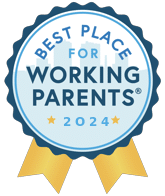Running a business is essentially “flying the plane while building it,” and sometimes that means going back to “school”.
Anyone who runs a business will tell you that it is an intense, ongoing learning experience involving a lot of research of basic and best principles, and “flying the plane while building it.” As a result, we all need a refresher course from time to time.
This past March, 37 existing small business owners from New Hampshire were selected to participate in the Goldman Sachs 10,000 Small Businesses program (10kSB for short). This program focuses on helping 10,000 small businesses across the country grow and create new jobs through an intensive learning curriculum that runs over the course of 12 weeks.
As a member of this inaugural class and founder of a New Hampshire small business (Cookson Communications, a Manchester-based communications agency), I will be sharing some lessons learned in a bi-weekly column over the duration of the program.
NH business leaders go back to school
First, let me provide some context on the program.
Small businesses play a huge roll in our economy. Nationally, there are nearly 30 million small businesses in the U.S. Of this, almost 6 million have more than one employee. The survival rate for those 6 million small businesses presents a challenge, with 50{a965bd5f02350c1bb0f1dba5e8fbf5866a7ee82ea489bba16c7da5a42788092e} remaining in business after five years and about 33{a965bd5f02350c1bb0f1dba5e8fbf5866a7ee82ea489bba16c7da5a42788092e} in business after 10 years. While this does not take into account businesses that were sold, merged or closed for non-financial reasons, it is a big number.
That 6 million figure is what sparked the incentive of the 10KSB program.
The coursework was developed by Babson College and is being taught across the country by community college faculty. The Community College System of New Hampshire is implementing the program locally. Through the Goldman Sachs Foundation, it is being provided free of charge to participants, which is incredible.
Applicants must:
- have more than one employee;
- have revenues of over $100,000 a year;
- participate in ten days of onsite meetings;
- complete roughly ten hours of work per week, including webinars, team and one-on-one meetings;
- do homework (for the first time in many years for some of us).
Growth is hard
The selected group of 37 went through a competitive application process at the beginning of the year and together we began our program with a two-day orientation. We are an eclectic group from all corners of the state and our businesses vary significantly in market and focus.
One of our classmates summed up the overall challenge in a simple statement by saying, “growth is hard.” Regardless, we all share an interest in learning and growing. Out of the 8,500 business leaders that have already completed this program across the country, 67{a965bd5f02350c1bb0f1dba5e8fbf5866a7ee82ea489bba16c7da5a42788092e} have reported increased revenues and 47{a965bd5f02350c1bb0f1dba5e8fbf5866a7ee82ea489bba16c7da5a42788092e} have reported growth in staff within six months of graduating. Consequently, there has been a lot of excitement over the output of the program.
Beginning the program: developing growth plans
All participants of the programs develop a detailed growth plan that will focus on a single growth opportunity for their business. Each week, the class goes through the modules to better understand core business principles and then tie them back into their model. As a group, we will analyze each other’s ideas, make suggestions and provide support.
Within our first two days of orientation, we were divided into six-person “growth groups” to learn more about each other’s businesses and pain points. We were able to hear from a program graduate, state officials that provide support for small businesses and other successful New Hampshire entrepreneurs that have gone through rapid growth. The first two days left us with a mixture of excitement and a feeling of being a bit overwhelmed by the tasks ahead.
Yes, there are homework assignments
In the first two weeks alone, our online discussion groups have over 200 posts and there is a high level of engagement. We have jumped into drafting our company history, developing a growth curve and describing a growth opportunity statement.
Opportunity statements have five characteristics:
- to solve a customer pain point or problem;
- to provide a new product or service or reach a new market;
- to build on an existing competitive advantage;
- to prove the potential to be profitable;
- to fit the company owner.
The day after our first webinar, I woke up at 4:30 am work on a homework assignment. I can guarantee that I did not do that as an undergraduate or graduate student!
This series also appears in New Hampshire Business Review and can be found at: nhbr.com/a-fundamental-education/








